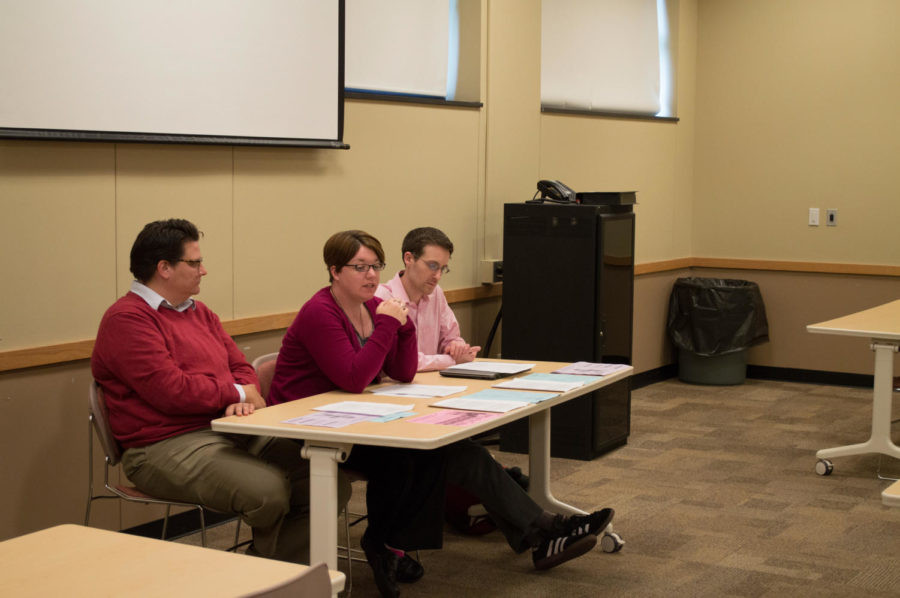LGBTSS discusses sexuality fluidity
September 24, 2014
Iowa State’s Lesbian, Gay, Bisexual and Transgender Student Services is trying to break down the idea of only two gender identities, something that is becoming more prominent in the LGBTQA community.
In honor of “Bisexual Awareness Day,” LGBTSS put on its first “Out2Lunch” panel Sept. 23. The panelists discussed the topic of sexual fluidity.
Sexual fluidity is defined as “not just having homosexual and heterosexual [identities] but also having other identities in the middle like pansexuality, bisexuality, and queer,” said Elza McGaffin, LGBTSS intern and double major in child, adult and family serves and women and gender studies.
One of the main topics discussed was the differences between the varied sexual identities. Brad Freihoefer, coordinator of LGBTSS, explained the concept.
“When we look at identity in this case, it’s about who we care about, who we want to build relationships with,” Freihoefer said. “It’s about who we love. I mean that’s really at the core what it’s about.”
After the ground rules of the discussion were laid, two sheets were passed out to the group. One contained the many models of sexual orientation and the other was the “genderbread person.” It detailed four different parts of people that made up their identities.
This “genderbread person” was accompanied by four sliding scales with five labels along the bottom to help determine which identity a person might be for each of the categories. The categories included gender identity, gender expression, biological sex and “attracted to.”
Rather than be in one set of boxes with labels, sexual fluidity allows people to place themselves in one, two or even twenty different boxes. These boxes can change for a person throughout time, maybe even throughout the day.
Freihoefer talked about two identities that most often confuse people: bisexual and pansexual. He explained the difference between those two identities.
A person who identifies as bisexual takes gender into consideration when picking a partner. Freihoefer said pansexuals are attracted to a partner’s “personhood” rather than the gender.
The panel also discussed what it meant to be queer. McGaffin defined queer as a nonconforming label.
“It can be used as an umbrella term to mean just within the LGBTQA community,” McGaffin said. “But that it can also mean a gray area of the spectrum.”
Kenni Terrell, freshman in journalism and mass communication, had a personal experience with sexual fluidity. She transitioned from calling herself bisexual to pansexual because there is “just so much love in the world.”
She described her transition as evolving. She said the transition to pansexual made her feel like she could show her complete self.
When it came to the debate on whether identities are a choice, Freihoefer said it’s a choice for some people and for others it is not.
McGaffin said while identity is usually not a choice, sexual behavior is.
“Is it a choice? Are we born with it? That to me isn’t the question,” Freihoefer said. “It’s ‘Are we loving and teaching consent and honesty and good communication and supporting each other?’ That to me sounds like a cool world to live in.”

















